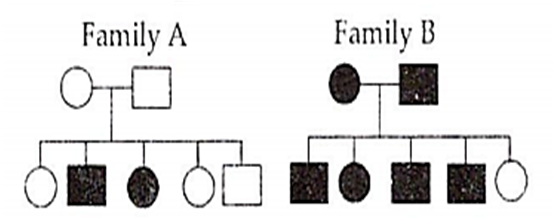 Multiple Choice Questions
Multiple Choice QuestionsWhich of the following contraceptive devices make uterus unsuitable for implantation?
Progestasert
CuT
Lippe's loop
Multiload
In Miller's experiment, he used a mixture of CH4, NH3, H2 and water vapour in a closed flask to mimic early earth conditions. What was the temperature at which this flask was kept?
800C
1200
200C
400C
Sexual stage (gametocytes) of Plasmodium occurs in
Salivary glands of mosquito
Human RBC
Intestine of mosquito
Human liver
Sporopollenin is a constituent of pollen exine. It can be degraded by the action of
enzymes
high temperature
strong acids
cannot be degraded
After doble fertilization, a mature ovule has
1 diploid and 1 haploid cell
1 diploid and 1 triploid cell
2 haploid and 1 triploid cell
1 haploid and 1 triploid cell
B.
1 diploid and 1 triploid cell
Double fertilization is the fusion of two male gametes with a female gametophyte. It is found only in Angiosperms.
In angiosperms, the pollen tube bursts open in one of the two synergids to release the two male gametes. One male gamete fuses with the egg to form a diploid zygote and is known as generative fertilization. The second male gamete descends down and fuses with the diploid secondary nucleus of the central cell to form a triploid primary endosperm cell and is known as vegetative fertilization.
After double fertilization, mature angiospermous ovule contains one diploid cell (zygote) and one triploid cell (endosperm).
Genetically modified (GM) crops can be produced by
recombinant DNA technology
somatic hybridization
cross breeding
micropropogation
Which of the following is a palindromic sequence?
5' - CGTATG - 3'
3' - GCATAC - 5'
5' - CGAATG - 3'
3' - CGAATG - 5'
5' - GAATTC - 3'
3' - CTTAAG - 5'
5' - GACTAC - 3'
3' - TACGAC - 5'
Which of the following is true for a recessive disease in Family A and B?

In family A, both the parents are homozygous recessive
In family B, both the parents are heterozygous dominant.
In family B, both the parents are heterozygous recessive
In family A, both the parents are heterozygous recessive.
Which of the following is not true for inbreeding?
It causes inbreeding depression after a few generations
It always increases the productivity.
It is used to produce a pure line.
It leads to homozygosity
